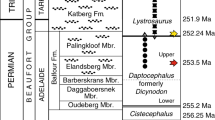Abstract
TEPHRA falls from Mount Mazama1,2, on the site of the present Crater Lake caldera in Oregon, form the most extensive Holocene marker horizon in the Pacific North-west of the US and the adjacent part of Canada. Ash has been found east to Saskatchewan, south to Nevada, north to central British Columbia and on the Pacific Ocean floor3–6. Although the Mazama ash unit has been radiometrically dated repeatedly in the past 25 years (its age was one of the first determined by Arnold and Libby7), problems remain about the nature of the ashfall(s) and the radiometric control for the event(s). For example, the ash shows a degree of pertrographic variation that is not attributable only to gravity sorting away from the source. Also the spread of bracketing or included dates for tephra from 6,600 to ∼7,000 BP, using charcoal or non-calcareous sediments, is wider than expected for a single Holocene event8–10. Taken together, these facts suggest multiple Holocene eruptions of Mount Mazama. Substantial evidence of repeated or multiple eruptions is seen in the two unit sequence of Mazama ash in the C horizons of some soils and in peat bogs in Oregon. The ranges of radiocarbon dates under either the upper or the lower ash layers at several of these sites are significantly different, suggesting that three ash layers may occur11. Near Stillwater, Nevada, at least three ash units can be attributed to Mazama, the lowest of which is petrographically distinct from Mazama ash found elsewhere4. We report here the first demonstration that Mount Mazama erupted at least twice within a 200-yr span in the Holocene.
Similar content being viewed by others
References
Williams, H. Crater Lake: the Story of its Origin, 1–22 (University of California Press, Berkeley, 1941).
Williams, H. Publications. Carnegie Institution of Washington 540, 1–162 (1942).
Florer, L. E. Mar. Geol. 14, 73–78 (1973).
Davis, J. O. thesis, Univ. Idaho (1977).
David, P. P. Can. J. Earth Sci. 7, 1579–1583 (1970).
Fryxell, R. Science 147, 1288–1290 (1965).
Arnold, J. R. & Libby, W. F. Science 113, 111–120 (1951).
Rubin, M. & Alexander, C. Am. J. Sci. Radiocarbon Suppl. 2, 161 (1960).
Kittleman, L. Bull. geol. Soc. Am. 84, 2957–2980 (1973).
Lemke, R. W., Mudge, M. R., Wilcox, R. E. & Powers, H. A. Bull. US geol. Surv. 1395–H (1975).
Borchardt, G. A., Norgren, J. A. & Harward, M. E. Bull. geol. Soc. Am. 84, 3101–3108 (1973).
Mack, R. N., Rutter, N. & Valastro, S. Quat. Res. (in the press).
Mack, R. N., Bryant, V. M. & Fryxell, R. Am. Midl. Nat. 95, 390–397 (1976).
Smith, H. W., Okazaki, R. & Knowles, G. R. Quat. Res. 7, 207–217 (1977).
Mack, R. N., Rutter, N., Bryant, V. M. & Valastro, S. Quat. Res. 10, 241–255 (1978).
Mehringer, P. J., Blinman, E. & Petersen, K. L. Science 198, 257–261 (1977).
Author information
Authors and Affiliations
Rights and permissions
About this article
Cite this article
MACK, R., OKAZAKI, R. & VALASTRO, S. Bracketing dates for two ash falls from Mount Mazama. Nature 279, 228–229 (1979). https://doi.org/10.1038/279228a0
Received:
Accepted:
Issue Date:
DOI: https://doi.org/10.1038/279228a0
- Springer Nature Limited





